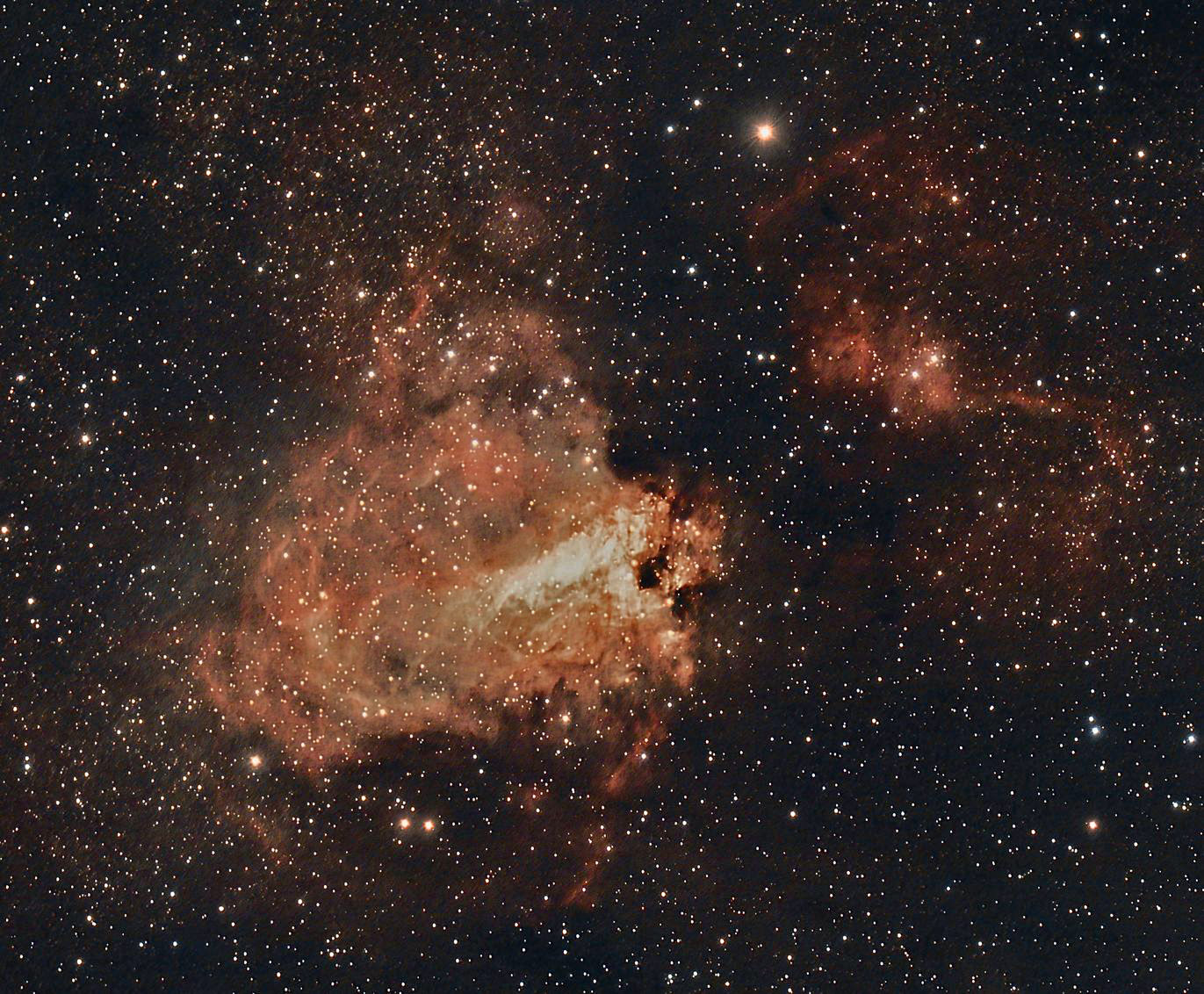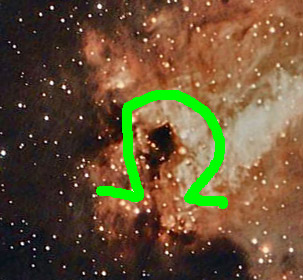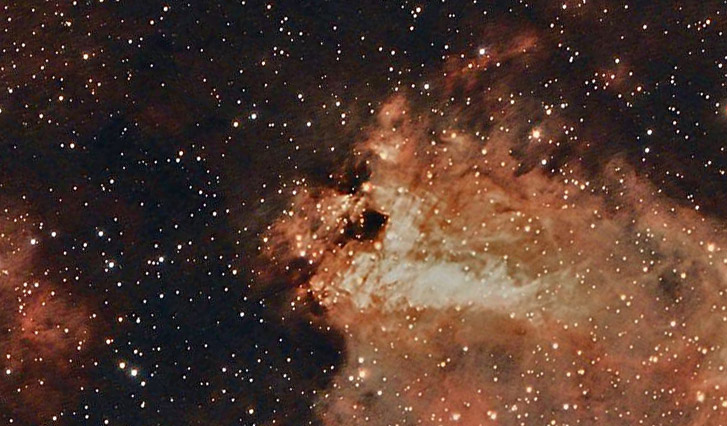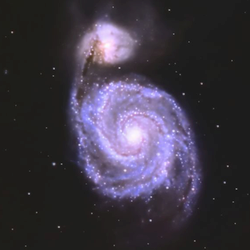M17, another vast region of interstellar gas and dust, is most commonly known as the Omega Nebula or the Swan Nebula. The complex measures 15 light-years across and is about 5,000 light-years from Earth.

Glowing hydrogen gas is the primary source of the nebula’s vibrant hues. Also visible are intricate filaments and tendrils of gas, woven like cosmic threads. The core of the nebula, where young, massive stars are born, appears as a concentrated brilliant region illuminating the surrounding nebulous material. The dark lanes and dusty regions within M17 contrast against the glowing background. They are potential sites for the formation of new stars.
IC4706 and IC4707 are small nebulae that are are actually part of the same nebular region as M17.
Why all the names?#
Messier 17 has been called at least five different names — Omega Nebula, Swan Nebula, Horseshoe Nebula, Checkmark Nebula and Lobster Nebula. Why so many?


As to the Lobster, I am at a loss to see any resemblance. Perhaps the two sides of the Omega form the lobster’s claw?? Do you have any ideas?
Since the images in this blog are relatively large and contain a lot of detail, if you are using a phone or a small tablet, you might want to consider returning sometime when you can use a computer with its larger screen.
